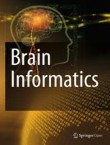2022 Citation Impact
7.3 - CiteScore
1.609 - SNIP (Source Normalized Impact per Paper)
0.986 - SJR (SCImago Journal Rank)
2023 Speed
12 days submission to first editorial decision for all manuscripts (Median)
128 days submission to accept (Median)
2023 Usage
302,950 downloads
141 Altmetric mentions
